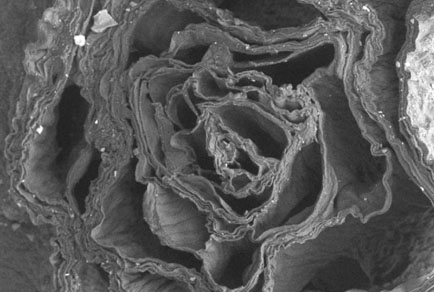Abstract
This paper provides the first morphological and chemical description of the stylets (vestigial shell) of Enteroctopus megalocyathus, a large, commercially and ecologically important benthic species that is fished along the southern coasts of Argentina and Chile. The stylets are thin, semi-transparent curved structures embedded in the muscular tissue of the dorso-lateral regions of the mantle, and placed inside an epithelial sac. Rostral and post-rostral parts and a bend could be distinguished. Differences in the curvature of the post-rostral parts allow the discrimination of left and right stylets. In recent years these structures have received attention because of their potential use as a tool for age determination, based on interior growth rings. The elemental composition inside stylets can also assist in reconstructing environmental histories, and in determining dispersal and population structure. The length of the different parts and the maximum diameter at the bend were measured and compared between sexes and between left and right stylets. Transverse cuts were used to describe histological structures, the nucleus and the white core that surrounds it, and growth increments. Constituent chemical elements were analysed with a scanning electron microscope equipped with an X-ray energy-scattering microanalyzer. No significant differences between sexes were detected in the relative length of the post-rostral and rostral parts of the stylets. These relative lengths could, however, be of taxonomic value at the generic level. Two types of concentric increments were observed; the embryonic nucleus of the stylets was amorphous and did not present growth increments. The distribution of chemical elements in the stylets is also described.

